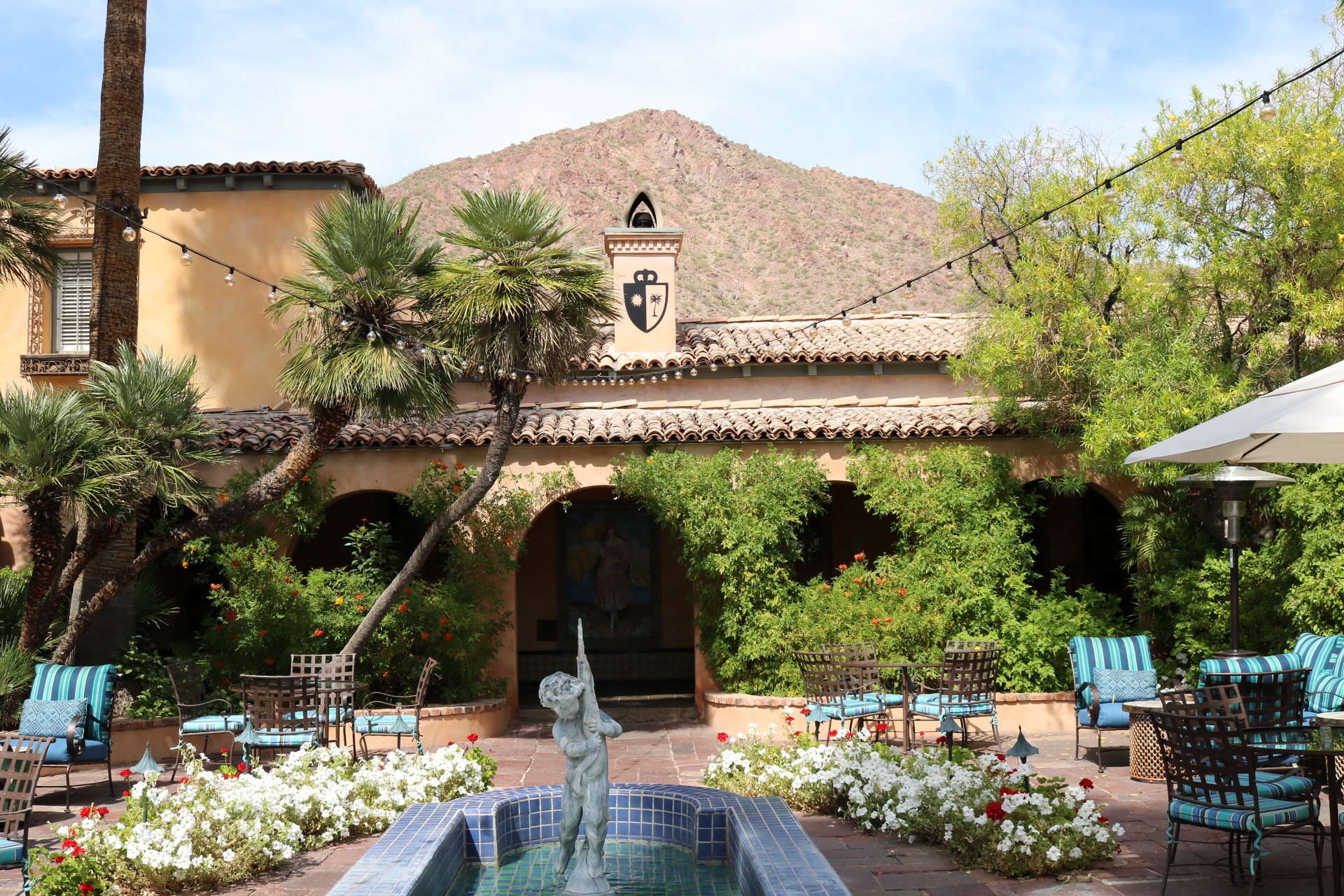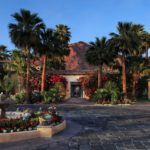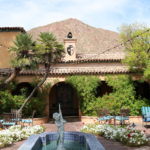Writer Amanda Christmann
Photography Courtesy of Royal Palms Resort
[dropcap]T[/dropcap]he year was 1926. World War I had ended eight years prior, and the Roaring 20s were in full swing. While Phoenix’s once-booming cotton industry had all but dried up following the war, a new era of growth had begun in the Valley of the Sun—one writer Scott Fitzgerald referred to as the “greatest, gaudiest spree in history.”
It was a booming time to be in Phoenix, and everyone who was anyone wanted a piece of the dream. Among them was a 62-year-old New York industrialist and financier named Delos Willard Cooke. A nephew of finance mogul JP Morgan, he’d made his fortunes in the railroad and steamship industries, and had decided it was time to enjoy life for a change.
Cooke’s motivation was his love for his wife, Florence, who was in ill health at the time. New York winters had been particularly cold in recent years, and common thought was that the warm, desert air would be therapeutic for her.
Cooke resigned from his job, writing that he was ready to “devote most of my time to the welfare and happiness of my wife from now on. She has first claim on me.”
Cooke likely heard about Phoenix, in part, because the Southern Pacific Railroad was making big news as it expanded through the city. Prior to its 1926 groundbreaking at Union Station downtown, Phoenix was relatively isolated from the rest of the country. With the railroad came industry and culture—and an unprecedented boom in population.
A few miles outside of the city hustle, the highest peak in the area called to Cooke. The rugged sandstone and granite escarpments of Camelback Mountain, and the teeming desert wildlife, appealed to a part of him that he hadn’t satisfied back east. With a stroke of a pen, he purchased 65 acres and began to build El Vernadero, their 3,500-square-foot Spanish revival winter haven.
The home was designed to echo the ambiance of some of the couple’s favorite moments in Europe. Seven decades later, many of its Granada-tiled roofs, arched windows and Juliet doors remain as comforting and stylistic as the day the Cookes imagined them. White stucco walls gleamed cleanly in the Arizona sun, and sound construction and elevated ceilings kept the house relatively cool on the hottest of days.
Mediterranean and Mexican hacienda styles also influenced the home’s design. Hand-selected tiles, imported from Spain, were chosen to personalize the portico surrounding a large outdoor courtyard. This was where the Cookes would entertain their neighbors and guests—the Biltmores, the Wrigleys, the Wrights and more names on the list comprised of the “who’s who” of the Phoenix and American elite at the time.
Towering palm trees, all the rage in the Valley, were planted along the home’s grand driveway to welcome them. Those palms would eventually become the property’s namesake.
There was no shortage of love put into the home, but the Cookes’ enjoyment of it would be short-lived. El Vernadero was completed in 1929. In a sad twist of irony, it was not Florence Cooke who succumbed to her illness, but Delos who died suddenly two years later at the age of 66.
For six years, Florence worked to maintain the estate, then made the heartbreaking decision to sell it to WE Travis, who was then the president of Greyhound Bus Lines.
The Travis family owned and loved the home for the next five years. They added a second story to the mansion’s west wing that included a chapel and office space for a priest, who lived on-site and pastored nearby residents.
It was another tragedy—the death of Travis’s wife—that led to a third and fourth changing of hands, first to Aviola Radio Company president John Ross, then to Biggest Little Big Band in America leader Al Stovall.
Stovall saw a different future for the home. It was the mid-1940s. World War II had ended, and the American Dream had taken on a new aspect: travel. He built 15 casitas west of the original home and converted rooms in the main house to suit guests.
In 1948, the first visitors checked in to the newly dubbed Royal Palms Inn. Through the years, it would become a resting point for the likes of Frank Sinatra, Groucho Marx and other big stars.
Today, 70 years after the first bricks were laid, the grounds of the Royal Palms have undergone significant transformation, but they still reflect the comfortable grandeur of the 1920s. One of the most highly regarded resorts in the Phoenix area, it has served as a temporary stay for the Hollywood elite and for Presidents of the United States and their families.
The on-site restaurant, T. Cook’s, is still a low-key hot spot for recognizable names, partly for the great food and drink menu, and partly because it offers a sense of anonymity not found in other places.
Peaceful rooms decorated in aqua blue and umber wind through a maze of walkways. Many have private patios, and offer a cozy respite for those who choose to simply enjoy the beauty.
A rich-looking library with a tiger oak fireplace that once decorated the Chicago office of famed area developer Fred Unger invites visitors to relax for a while, and large, versatile conference rooms have formed the backdrop for everything from lively wedding receptions to corporate meetings.
Outside, daybeds and cabanas filled with lounging visitors surround a pool that conjures images from “The Great Gatsby.” The Alegria Garden, set for one of two weddings to take place on the day we visited, is a short distance away. Its striking arrays of aromatic flowers are stunning.
The Vernadero Lawn, where a 1920s-themed 70th anniversary party was held earlier this year, shows the resort’s relatively new focus on attracting visitors of all ages. Cornhole, Jenga, and an outdoor fireplace where s’mores are served regularly are all part of its permanent fixtures, although guests have hosted many types of events in the largely private space.
The Alvadora Spa and 24-hour fitness center offer enough services and amenities that guests never need leave the property.
What began as one couple’s dream has transformed into a much-loved piece of Phoenix history. For 70 years, the Royal Palms Resort has been transformed by dreamers and doers into a place where time stands still, and where the breathtaking beauty of Camelback Mountain can be enjoyed to its fullest.










Comments by Admin